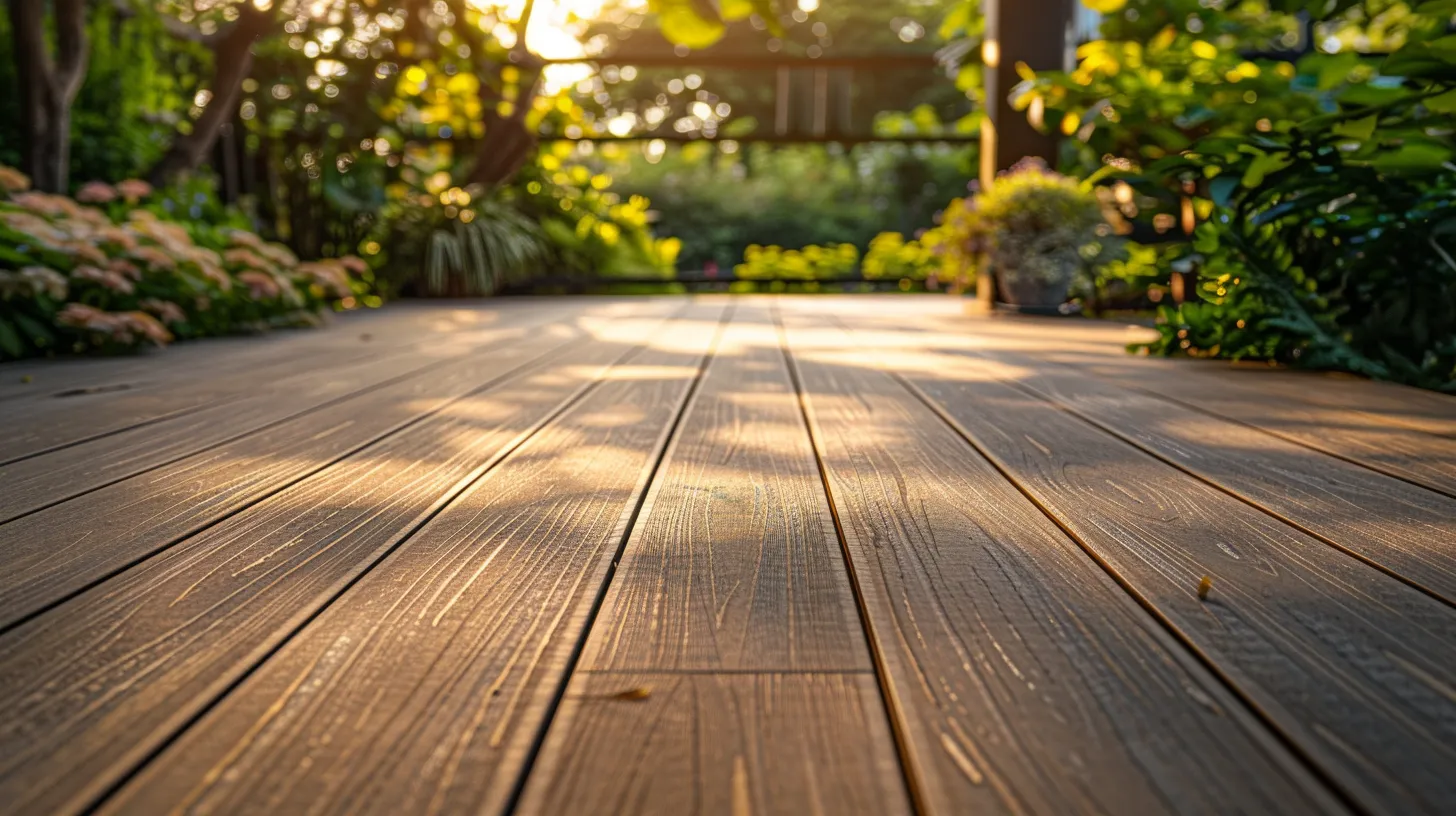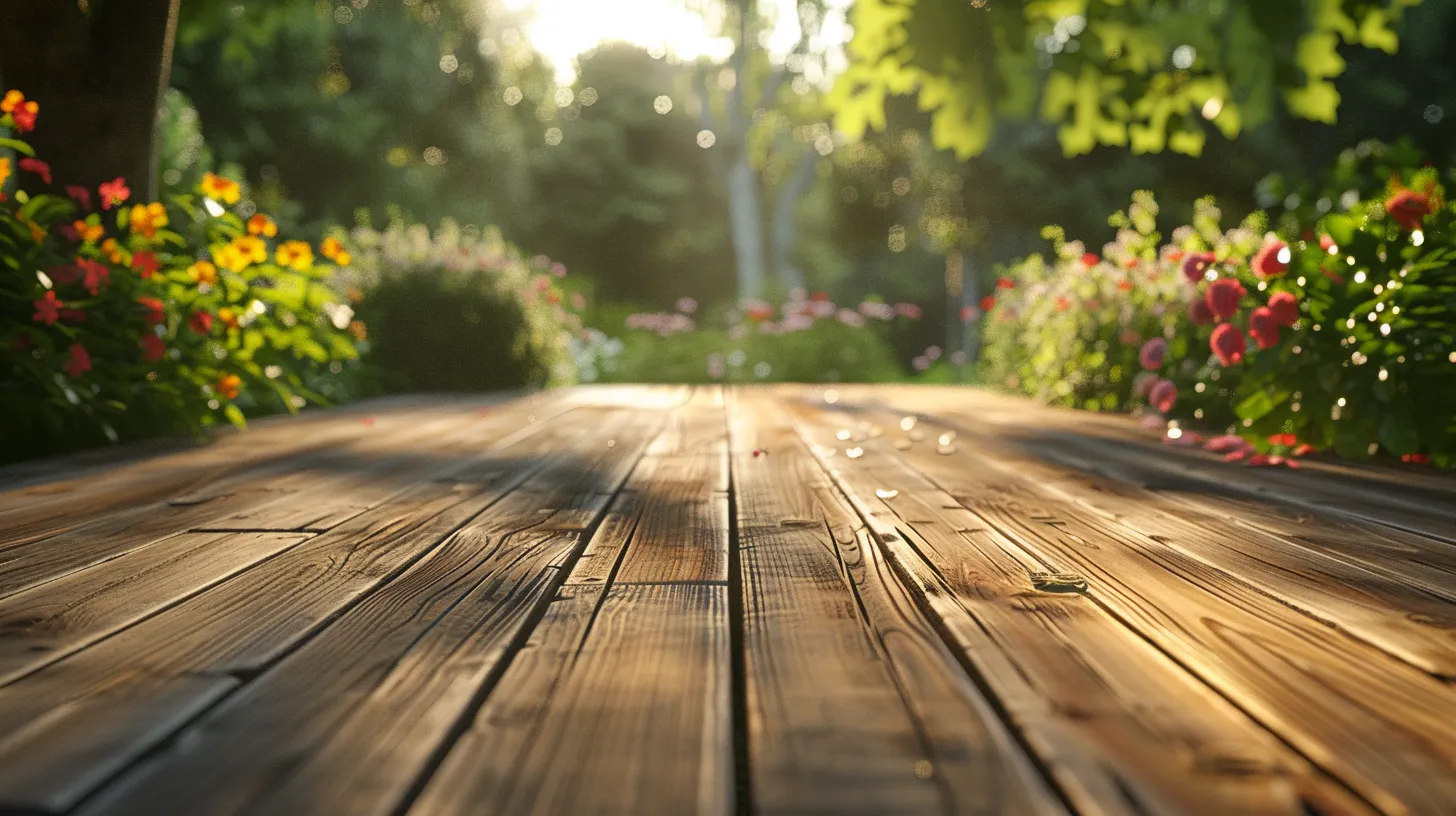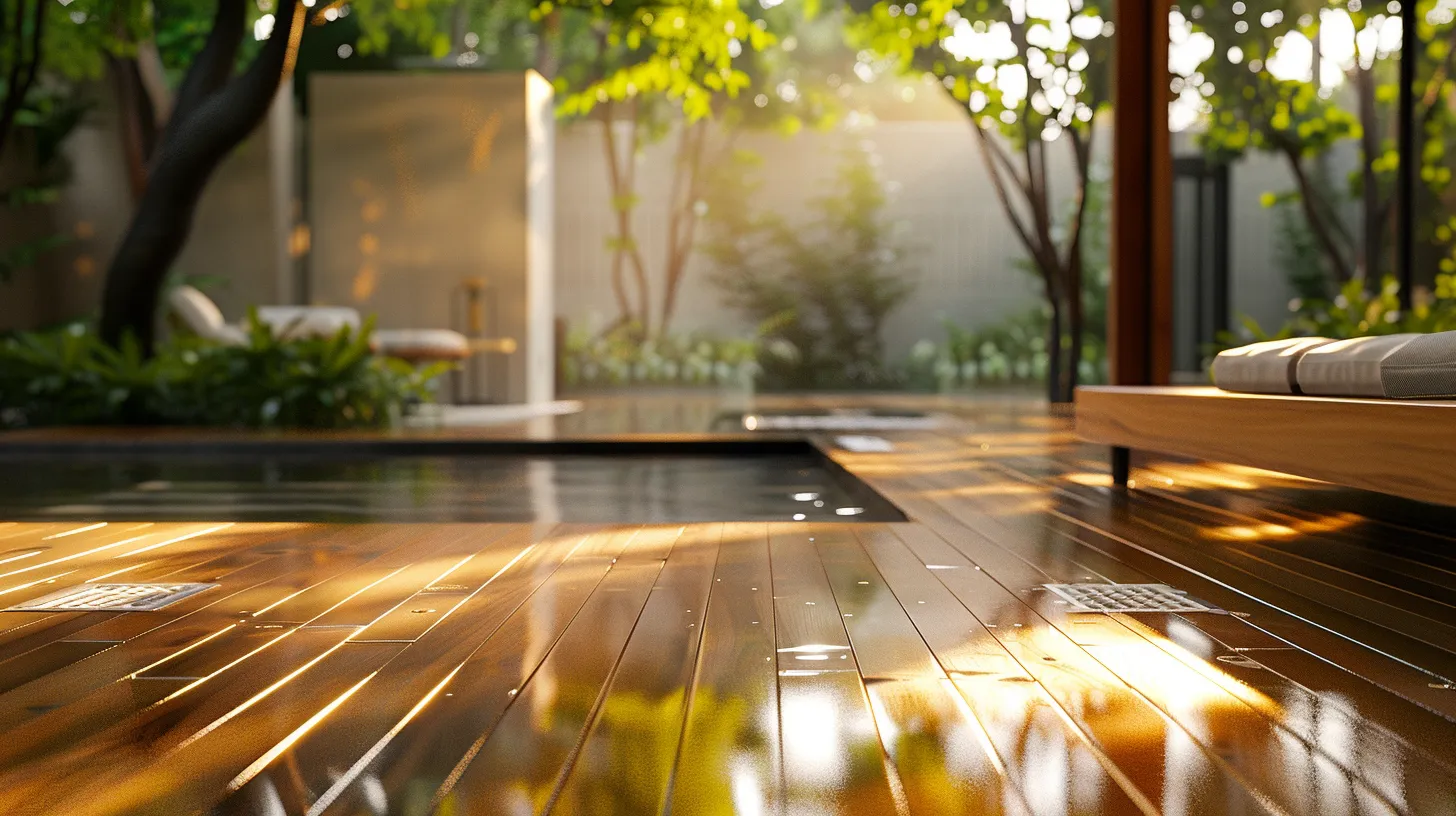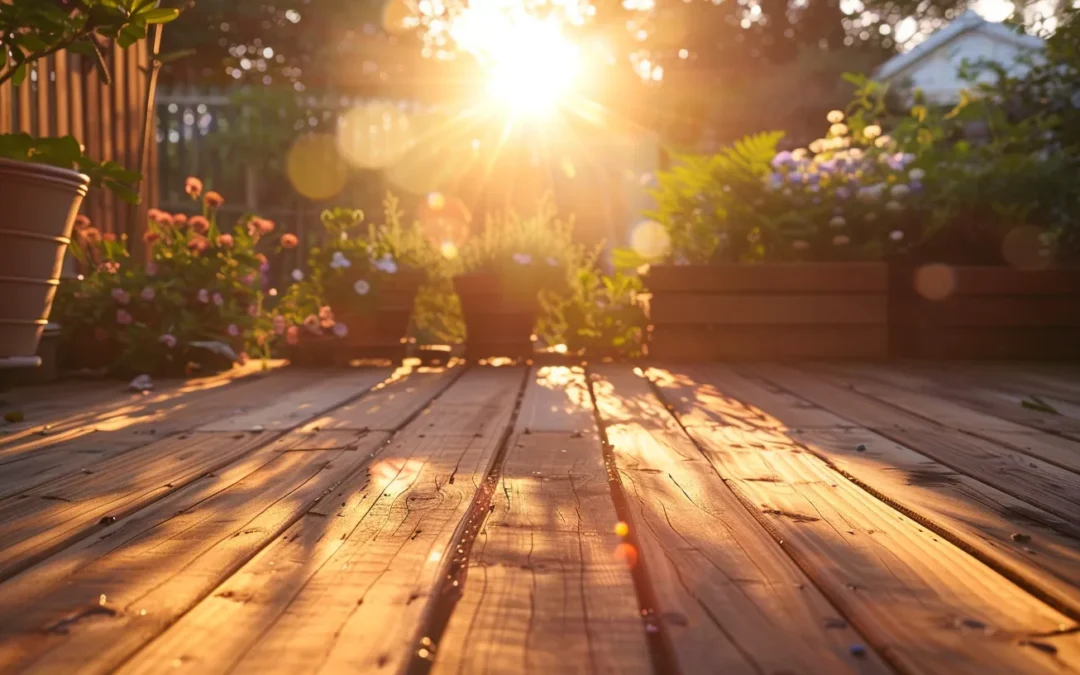When considering the longevity and maintenance of outdoor structures, many homeowners grapple with the choice between composite decks and traditional wood. While wood may be a classic option, it often falls short in durability and requires regular waterproofing to combat wear and tear from insects and weather. This article will explore the lifespan of both materials, detailing the maintenance needs associated with each and offering insights into long-term costs. By understanding these factors, readers can make an informed decision that minimizes environmental impact, such as landfillwaste, while enhancing their outdoor spaces.
Key Takeaways
- Composite decking offers lower long-term maintenance costs compared to traditional wood options
- Environmental factors significantly influence the lifespan and durability of decking materials
- Regular inspection and cleaning are crucial for maintaining both composite and wood decks
- Warranties for composite materials often extend up to 25 years, enhancing consumer confidence
- Aesthetic preferences should be weighed against maintenance demands when choosing decking materials
Understanding the Longevity of Composite Decks

The longevity of composite decks is influenced by various factors, including material composition, environmental conditions, and maintenance practices. Examining real-world durability through case studies reveals the resistance of composite materials to issues like termite damage. Additionally, understanding the maintenance requirements over time, the impact of environmental factors, and warranty considerations can provide insights into the overall safety and lifespan of composite decking options.
Factors Influencing the Lifespan of Composite Materials
The lifespan of composite materials is significantly affected by environmental factors such as moisture, humidity, and exposure to ultraviolet light. Prolonged exposure to high humidity levels can lead to degradation if not properly managed through effective drainage and ventilation. Additionally, choosing composite materials engineered with UV-resistant properties can prevent colour fading and surface degradation, extending the overall durability. It is also essential to consider the recycling aspect of these materials, as selecting options that incorporate reclaimed materials can contribute to sustainability while maintaining high-performance standards.
Real-World Durability: Case Studies of Composite Decks
Case studies of composite decks reveal their impressive durability across various climates, demonstrating resistance to wear from sunlight and temperature fluctuations. For example, customers in regions with extreme weather have reported minimal fading and warping compared to traditional wood, particularly when composite boards are installed with proper joist spacing. Moreover, these decks provide a safe barefoot experience, as many composite materials remain cool to the touch even under direct sunlight, enhancing user satisfaction.
Maintenance Requirements Over Time
Maintaining composite decks over time requires a different approach compared to traditional wood. Unlike pine, which may need frequent sealing to protect against moisture and mold, composite materials typically require minimal upkeep, primarily involving regular cleaning to prevent dirt buildup and staining. Customers have reported high levels of satisfaction with composite decks due to their resistance to rot and pests, leaving them with less maintenance worry:
- Regular cleaning prevents the buildup of dirt and mold.
- Composite materials do not require sealing like traditional wood.
- Stain resistance contributes to long-term appearance retention.
- Less maintenance leads to greater customer satisfaction.
Environmental Impact on Composite Lifespan
The environmental impact on the lifespan of composite decks is significant, particularly for homeowners considering renovation. Selecting brands that prioritise sustainability can enhance durability while reducing ecological footprints. For instance, a reputable deck builder may recommend composite options that incorporate recycled materials, which not only extends the life of the deck but also supports a more sustainable building practice. By opting for high-quality materials, including innovative tile designs for aesthetics, consumers can achieve a lasting solution that aligns with their environmental values.
Warranty Considerations for Composite Decking
When considering the longevity of composite decking, warranty provisions play a critical role in the decision-making process. Many composite manufacturers offer extensive warranties that can span up to 25 years or more, often covering issues such as fading, staining, and structural integrity, which contrasts sharply with traditional woodspecies that may require regular maintenance and repairs. This level of assurance not only promotes confidence in the quality of the thermoplastic materials used in construction but also provides homeowners with peace of mind regarding their investment over time.
Composite decks last long, but what about traditional wood? Let’s take a closer look at how wood holds up over time.
Evaluating the Lifespan of Traditional Wood Decks

The longevity of traditional wooden decking is influenced by various factors, including the types of wood used and their inherent durability against mildew and environmental stressors. Understanding essential maintenance practices is vital, as proper care can significantly enhance wood lifespan while considering the cost implications for preservation. This section will also compare natural aging to chemical treatments, highlighting their impacts on the carbon footprint and the importance of quality fasteners in creating a lasting structure.
Types of Wood and Their Longevity
The type of wood selected for decking plays a crucial role in determining longevity and durability. For instance, hardwoods like teak or mahogany offer superior resistance to pests and environmental stressors, enhancing their lifespan compared to softer woods such as pine, which often incurs higher maintenance expenses. While traditional wood options may showcase attractive wood grain patterns, they typically require regular treatment to combat issues like rot and insect damage, contrasting sharply with the low-maintenance nature of solutions like PVC decking, which provides long-lasting performance without the drawbacks associated with natural materials.
External Factors Affecting WoodDurability
External factors significantly influence the durability of traditional wood decks. Elements such as moisture, extreme temperatures, and sunlight exposure can lead to degradation, requiring homeowners to invest in ongoing maintenance to preserve the beauty of their wood floors. In contrast, composite materials offer a robust alternative, featuring a blend of fibres and resin designed to withstand these environmental stressors while often including a warranty that guarantees their longevity.
Essential Maintenance Practices for Wooden Decks
Essential maintenance practices for wooden decks are vital for ensuring longevity and performance. Regular washing with a gentle detergent helps eliminate dirt and grime, while periodic sealing prevents moisture penetration and protects against decaying elements. Choosing durable building materials, like hardwood, over softer options can also alleviate some maintenance concerns, as hardwoodspecies typically require less frequent treatment than traditional alternatives, such as composite lumber, which are designed for durability but may face different maintenance challenges.
Cost Implications of WoodDeck Preservation
The cost implications of wooddeck preservation frequently prompt homeowners to weigh their options carefully. Regular maintenance practices, such as the purchasing of lumber for repairs and treatments for decay prevention, can accumulate significant expenses over time. Furthermore, the manufacturing of high-quality cladding solutions can offset immediate budget concerns while offering long-term benefits, as investing wisely can lead to reduced waste and fewer replacement costs down the line, thereby enhancing the value of the decking structure.
Comparing Natural Aging Versus Chemical Treatments
When evaluating the longevity of traditional wood decks, the choice between natural aging and chemical treatments plays a significant role. Natural aging promotes an environmentally friendly approach, allowing the wood to weather and gain character over time, while chemical treatments offer enhanced protection against mildew and pests, but may impact the deck’s ecological footprint. Homeowners aiming for durability should consider that while polyvinyl chloride (PVC) options require minimal maintenance and provide long-lasting performance without the drawbacks of traditional wood, proper care and treatment of wood can similarly extend its lifespan when executed thoughtfully.
Wood decks require care and attention to last. As alternatives grow in popularity, understanding the upkeep of composite decks becomes essential.
Maintenance Needs of Composite Decks

Maintenance needs for composite decks differ significantly from traditional wood, focusing on cleaning techniques that preserve appearance and integrity. This section will cover essential repairs and replacements for composite materials, seasonal tips for upkeep, common issues encountered, and the long-term costs associated with composite care. Practical insights will guide homeowners on maintaining their decks effectively, ensuring longevity and satisfaction.
Cleaning Techniques for Composite Decking
Effective cleaning techniques for composite decking focus on maintaining its appearance and longevity. Homeowners should regularly sweep the surface to remove debris and prevent mould buildup. A simple solution of warm water and mild soap is typically sufficient for deeper cleanings, while a soft-bristle brush can be used to tackle any stubborn stains. Ensuring the deck is rinsed thoroughly after cleaning will help preserve the material’s integrity over time:
Repairs and Replacements: Composite Decks Explained
Repairs and replacements for composite decks are typically less frequent than those for traditional wood, mainly due to the materials’ inherent resilience against decay and damage. While minor surface scratches may occur, they can often be addressed with simple cleaning products or repair kits specifically designed for composite materials. Homeowners should regularly inspect their decks for loose boards or fasteners, particularly in high-traffic areas, as timely replacements can prevent significant structural issues and ensure the longevity of the deck:
- Surface scratches can be remedied with cleaning products.
- Regular inspections help identify loose boards or fasteners.
- Timely replacements prevent potential structural damage.
Seasonal Maintenance Tips for Composite Decks
Seasonal maintenance for composite decks is crucial to preserving their longevity and visual appeal. In spring, homeowners should remove any debris accumulated over the winter months and wash the surface with a mild soap solution to eliminate dirt and prevent mould growth. During fall, clearing leaves and organic matter is essential, as trapped materials can lead to staining and moisture retention, impacting the deck‘s integrity over time. Regularly inspecting joints and fasteners during these seasons will help identify potential issues early, ensuring the continued durability of the composite decking.
Common Issues Found in Composite Decking
Common issues encountered with composite decking often include surface scratches, fading, and potential mold growth if not properly maintained. While composite materials are designed to be more resistant to damage compared to traditional wood, instances of scratching can occur, especially in high-traffic areas. Regular inspections and prompt cleaning using appropriate products can mitigate these concerns, ensuring the longevity and aesthetic appeal of the deck remain intact over time.
Long-Term Costs Associated With Composite Care
The long-term costs associated with maintaining composite decking tend to be lower compared to traditional wood options. Homeowners can expect to save on expenses related to treatments, such as sealing and staining, which are often necessary for wood decks to prevent decay and insect damage. Additionally, the durability of composite materials translates to fewer repairs or replacements over time, allowing property owners to enjoy their outdoor spaces with greater peace of mind and less financial concern.
Composite decks bring their own set of maintenance demands. Now, it is time to turn to traditional wood decks, where care and attention tell a different story.
Maintenance Requirements for Traditional Wood Decks

Maintaining traditional wood decks requires a comprehensive approach that includes ideal cleaning methods for wooden surfaces, recognizing signs of wear and tear, and seasonal preparations for upkeep. Homeowners should also consider the costs associated with routine maintenance and the role of protective finishes in extending the lifespan of their wooden structures. Each of these factors contributes to preserving both the aesthetics and durability of wooden decks.
Ideal Cleaning Methods for Wooden Surfaces
For homeowners looking to maintain the appearance and longevity of their wooden decks, ideal cleaning methods are essential. Using a combined approach of gentle pressure washing and a solution of mild detergent can effectively remove dirt and debris without damaging the wood. Additionally, employing a soft-bristle brush during the cleaning process helps to eliminate stubborn stains while ensuring that the natural grain of the wood remains intact. Regular maintenance not only enhances aesthetic appeal but also prevents moisture buildup, which is crucial in avoiding rot and insect infestation.
Recognizing Signs of Wear and Tear
Recognizing signs of wear and tear on traditional wood decks is essential for maintaining their longevity and aesthetic appeal. Homeowners should regularly inspect for issues such as splintering, discoloration, and visible rot, all of which indicate that the wood may require treatment or repair. Additionally, irregularities like warping or loose boards can compromise the safety and functionality of the deck, necessitating prompt action to address these concerns:
- Splintering surfaces can pose safety risks.
- Discoloration often signals UV damage or weathering.
- Visible rot may require immediate repair or board replacement.
- Warping indicates moisture problems needing attention.
Seasonal Preparations for Wooden Deck Maintenance
Seasonal preparations for wooden deck maintenance are essential for ensuring the deck remains in excellent condition throughout the year. As temperatures shift, homeowners should inspect the surface for any signs of wear, such as cracks or splinters, and address them before they worsen. Additionally, applying a protective sealant, especially before winter, helps prevent moisture from penetrating the wood and reduces the risk of rot and insect damage, thus enhancing the deck’s longevity and appeal.
Costs Associated With Routine Upkeep of Wooden Decks
The costs associated with routine upkeep of wooden decks can accumulate significantly over time, making them an important factor for homeowners to consider. Expenses can include regular cleaning supplies, sealants for moisture protection, and potential repairs for any rot or insect damage. For instance, a homeowner may need to spend hundreds of dollars annually on treatments and maintenance, which can be a financial burden compared to the relatively low-maintenance nature of composite decking, often eliminating the need for such ongoing costs:
The Role of Protective Finishes in Extending Wood Lifespan
Protective finishes play a vital role in extending the lifespan of traditional wood decks by providing a barrier against moisture, UV rays, and environmental stressors. By applying sealants and stains regularly, homeowners can prevent issues such as rot, warping, and insect infestations, ensuring that their wood remains functional and visually appealing for years to come. An effective maintenance schedule, which includes reapplication of these protective layers, directly contributes to enhanced durability and reduced long-term repair costs.
Wood decks need attention over time, a commitment that does not come free. As the years pass, comparing the costs of wood and composite surfaces reveals important truths about value and longevity.
Comparing Long-Term Costs of Composite and Wood Decks

Comparing Long-Term Costs of Composite and Wood Decks
Analyzing long-term costs associated with composite decks versus traditional wood involves several key areas. This includes evaluating the initial investment required for each material, calculating ongoing maintenance costs, and assessing how durability influences resale value. Additionally, examining lifetime replacement expenses and planning for future repairs will provide homeowners with a comprehensive understanding of the financial implications of their decking choices.
Initial Investment: Composite Versus Traditional Wood
The initial investment for composite decking typically exceeds that of traditional wood materials. Homeowners often find that while the upfront cost of composite decks can be higher, the long-term savings related to reduced maintenance and enhanced durability can offset this difference. For instance, composite decks do not require regular sealing, staining, or replacement due to rot, allowing homeowners to allocate budget resources more effectively over time.
Calculating Maintenance Costs Over Time
Calculating maintenance costs over time reveals significant differences between composite decks and traditional wood. Homeowners often face recurring expenses with wooden decks, including costs for cleaning supplies, sealants, and repairs due to issues such as rotting and insect damage. In contrast, composite decking requires minimal upkeep, typically involving simple cleaning and no need for sealing, translating to considerable long-term savings for property owners.
Selling Value: How Longevity Affects Resale Potential
The selling value of properties often hinges on the longevity of their decks, as homebuyers typically seek durable and low-maintenance options. Composite decking‘s extended lifespan appeals to many buyers, particularly those interested in reducing future maintenance costs and time commitment compared to traditional wood options. Homes featuring composite decks generally retain their value and may command higher prices, making them an attractive investment for property owners looking to enhance resale potential.
Examining Lifetime Replacement Expenses
When evaluating lifetime replacement expenses for decking materials, composite options tend to offer a more favourable financial outlook compared to traditional wood. Composite materials are designed to resist rot, insect damage, and fading, significantly reducing the need for replacements over time. In contrast, wooden decks often require more frequent maintenance and eventual replacement due to deterioration, leading to higher long-term costs for homeowners who must factor in ongoing repairs and potential complete deck replacement.
Budgeting for Future Repairs in Both Materials
Budgeting for future repairs in both composite and traditional wood decks is essential for homeowners looking to minimize unexpected costs. Composite decks generally incur fewer repair expenses due to their resistance to rot and insect damage, while traditional wood often requires significant maintenance involving regular inspections, treatments, and the potential need for board replacements. Homeowners should factor in these maintenance requirements into their financial planning, as being proactive in this area can lead to significant long-term savings.
Cost matters when choosing decking. Now, let’s weigh the facts to help make a clear choice between composite and wood.
Making an Informed Decision Between Composite and WoodDecking

Evaluating personal preference and lifestyle is essential when choosing between composite and traditional wooddecking. Balancing aesthetics with practicality, understanding the environmental footprints of each option, and gathering testimonials from other deck owners provide valuable insights. Additionally, seeking professional advice can guide homeowners in making a long-term investment that suits their needs.
Evaluating Personal Preference and Lifestyle
When evaluating personal preference and lifestyle in the context of choosing between composite and traditional wooddecking, homeowners should consider their unique needs and the level of maintenance they are willing to commit to. For instance, those who prioritise low maintenance and durability may find composite options more appealing due to their resilience against environmental stressors. On the other hand, individuals seeking a natural aesthetic may gravitate towards wood, valuing its classic look despite the ongoing requirements for upkeep and treatment.
Balancing Aesthetics With Practicality
Homeowners often face the challenge of balancing aesthetics with practicality when choosing between composite decks and traditional wood. Composite decking has evolved to mimic the natural grain and warmth of wood while offering superior durability and lower maintenance requirements, making it an attractive and sensible choice for many. In contrast, traditional wood provides a classic look but typically demands more upkeep, such as regular sealing and treatments, leading to increased time and costs over the years:
Comparing Environmental Footprints of Each Option
When comparing the environmental footprints of composite decks and traditional wood, several factors come into play. Composite materials often use recycled content, which reduces waste and promotes sustainability. In contrast, traditional wood sourcing can lead to deforestation and habitat loss, particularly if not from responsibly managed forests. Homeowners seeking to minimize their ecological impact may find that products made from eco-friendly materials align better with their values, while also considering the longevity of these options in their decision-making process.
Gathering Testimonials From Other Deck Owners
Gathering testimonials from other deck owners can provide invaluable insights for homeowners weighing the benefits of composite decks against traditional wood options. Real-world experiences highlight the long-term satisfaction and reduced maintenance demands associated with composite materials, while others may express appreciation for the aesthetic appeal of wood. Engaging with fellow homeowners through online forums or local home improvement groups allows prospective buyers to understand not only the performance but also the challenges faced with each decking choice, empowering them to make informed decisions tailored to their specific needs.
Seeking Professional Advice for Long-Term Investment
Seeking professional advice when choosing between composite and traditional wooddecking is essential for homeowners looking to make informed, long-term investments. Experienced deck builders can provide insights into material performance, maintenance needs, and overall durability based on local climate conditions and personal preferences. Furthermore, consulting with professionals not only helps assess the unique requirements of each project but also aids in selecting the best materials that align with aesthetic goals and budget constraints, ultimately paving the way for a satisfying outdoor living experience.
Conclusion
Choosing between composite decks and traditional wood involves understanding their differences in longevity and maintenance requirements. Composite materials offer lower upkeep and enhanced durability, making them a cost-effective long-term investment for homeowners. In contrast, traditional wood requires more regular maintenance, which can lead to higher ongoing expenses. Evaluating personal preferences, lifestyle needs, and environmental impacts will guide homeowners in making an informed decision that balances aesthetics with practicality.


Recent Comments